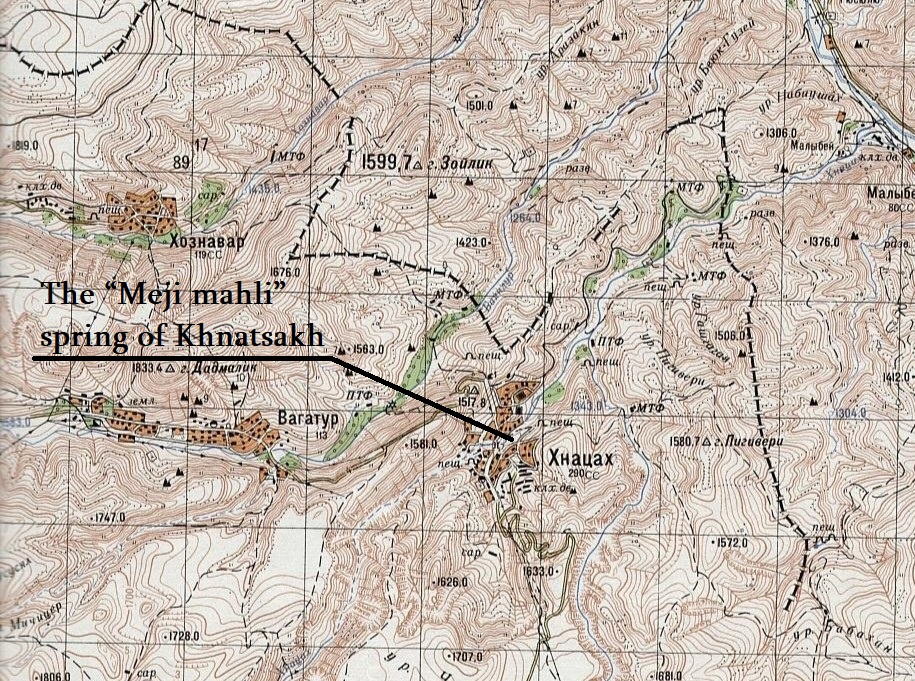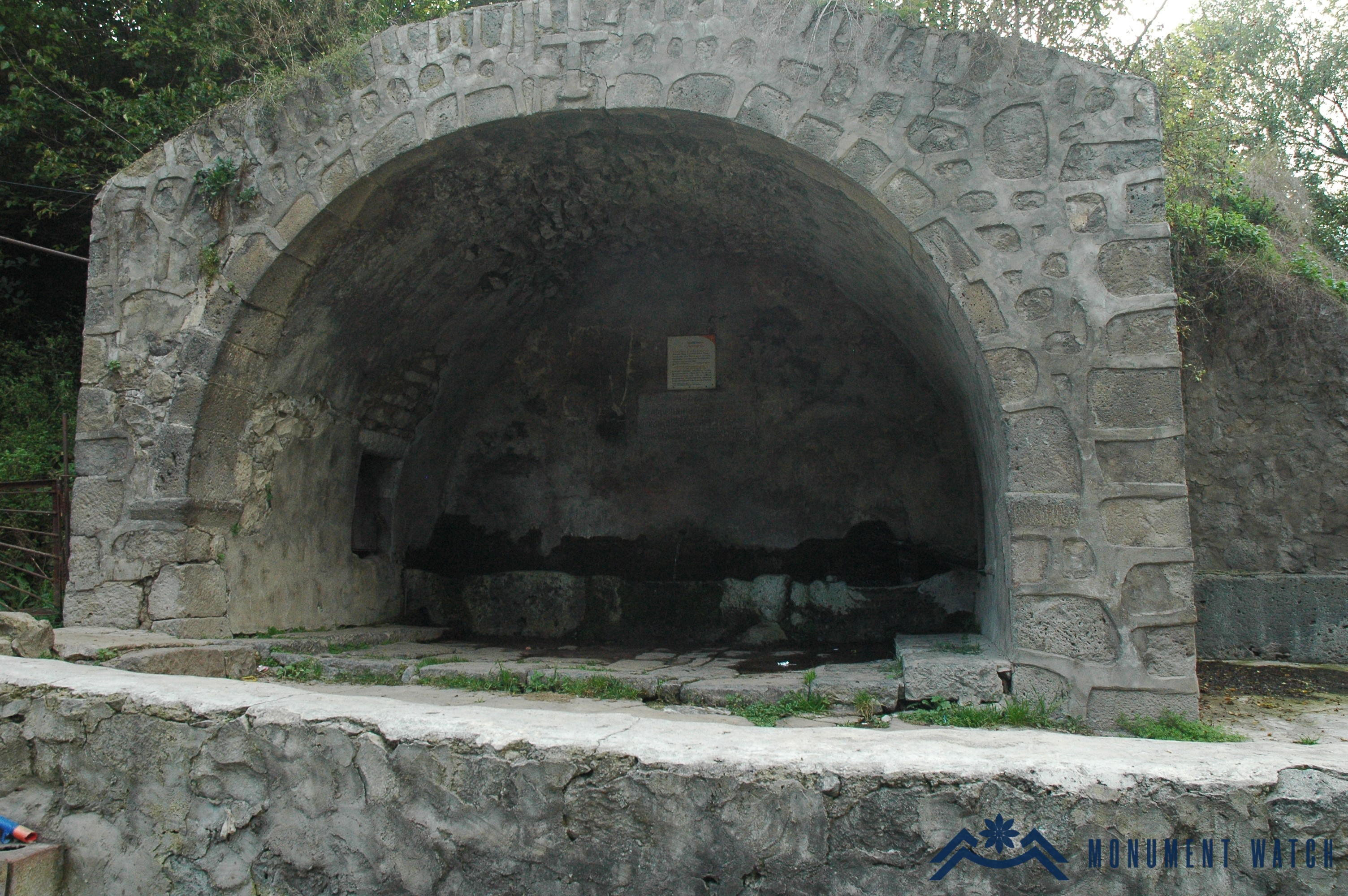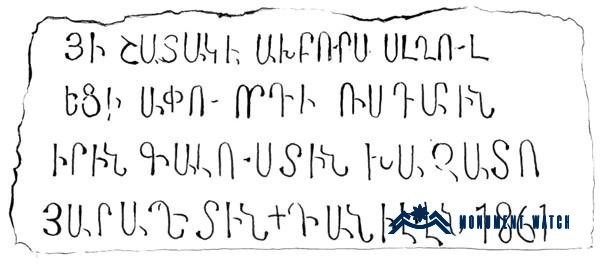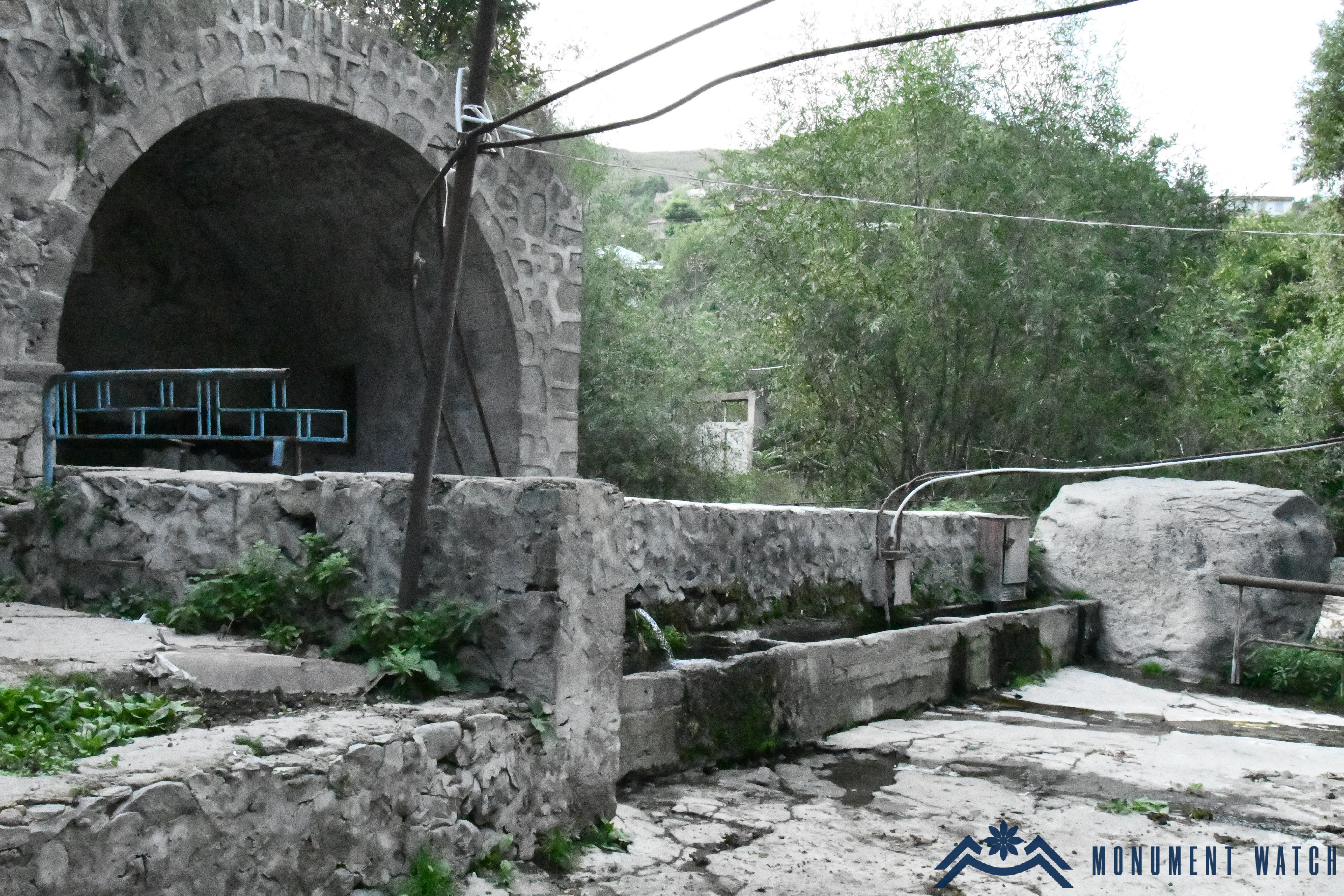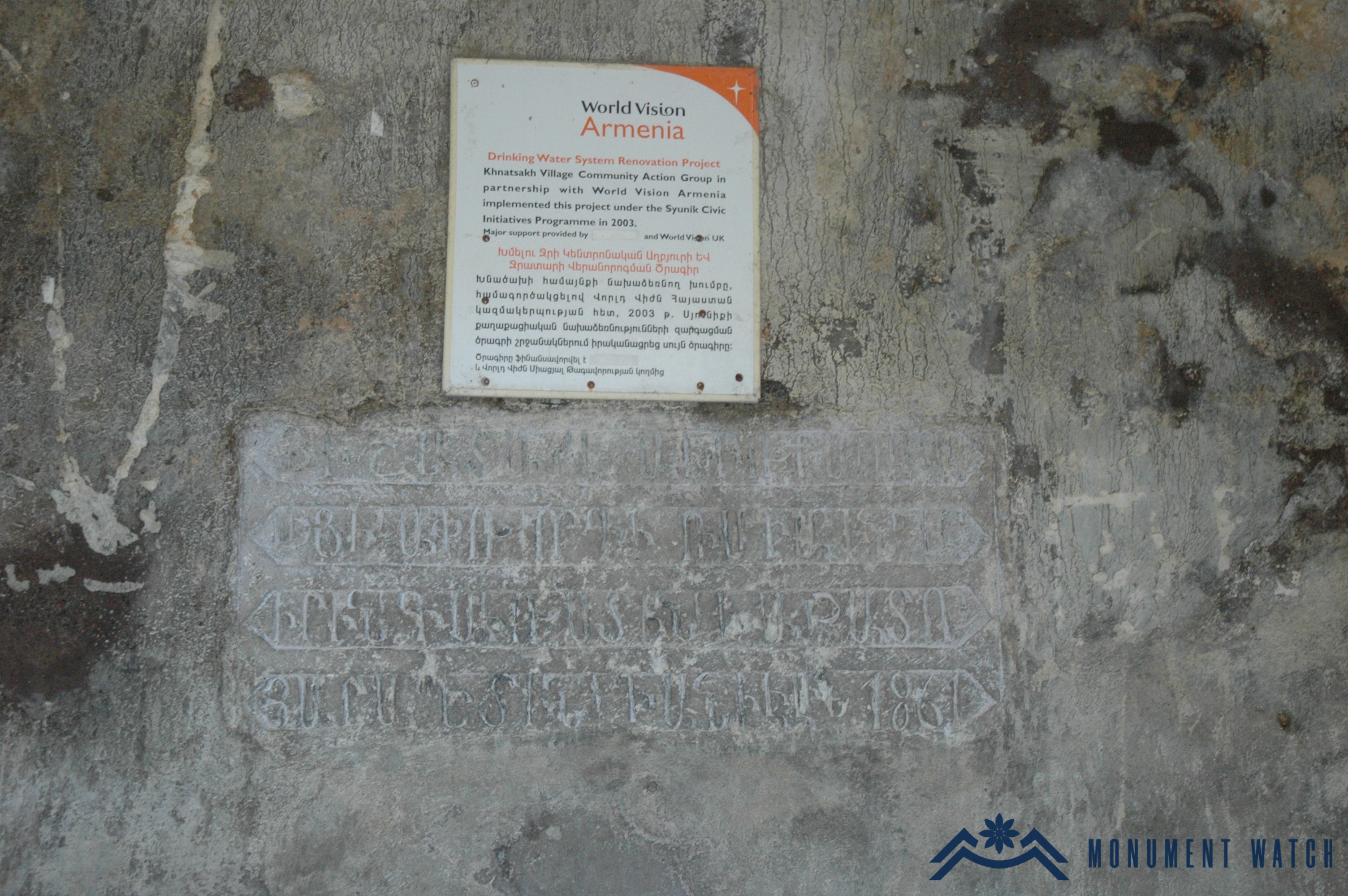The spring of the Meji Mahli of Khnatsakh
Location
The Khnatsakh village is situated in the Syunik region of the Republic of Armenia, approximately 109 km from the regional center of Kapan, 17 km from the center of the enlarged community of Tegh village, and 28 km from the city of Goris. It is 1380 meters above sea level. Among the village’s numerous monuments is the spring of the Meji Mahli.
Historical overview
According to Stepanos Orbelyan, the village of Khnatsakh was considered part of the Haband province and was listed in the tax records with a levy of 20 units (Orbelian 1910, 399).
During the 15th to 18th centuries, the Kashatagh principality flourished as a predominantly Armenian-inhabited, semi-independent entity. Its administrative centers were the settlements of Kashatagh and Khnatsakh, governed by the Melik-Haykazian princely family. This princely family traced its lineage back to Prince Haykaz, a descendant of the Khalgbakian-Proshyan princely family, as documented in historical sources from the 15th to 17th centuries (Hovsepyan, 1928, 232).
The role of Khnatsakh in Syunik increased notably during the 16th century, when Melik Hakhnazar, son of Melik Haykaz, relocated the center of the melikdom from Kashatagh town to Khnatsakh and constructed a new mansion (Hasratyan 1985, 158).
The 19th-century spring located in the center of the village continues to hold significant importance, both from a historical-cultural perspective and in terms of providing drinking water. The construction inscription, a quatrain, has been preserved in the central part of the spring: "This spring is a memorial/made by Apu's son Rustam, Amirin, Galust, Khachatur, / Harapet, and Daniel, 1861" (Khurshtyan 2023, 225, fig. 2). There is also information preserved about the spring's construction, indicating that Rustam Danielyan provided its funding from Alghuli, while its builder was Simon Simonyan, a highly skilled craftsman from the village of Khnatsakh (Khurshtyan 2023, 225).
Architectural-Compositional Examination
The spring is built with locally sourced rough-hewn stone and lime mortar. The central part of the structure is a vaulted hall featuring a single niche in each of the right and left walls. In the central section, under the arch, are three main stone troughs, with two more extending on the right side. Later on, additional concrete and iron troughs were added in front of and to the right of the spring (Fig. 3).
The water source, brought via a tunnel (kahriz), has been repeatedly repaired and expanded. The central drinking water spring and its conduit were last thoroughly renovated in 2003 by the Khnatsakh community’s initiative group and World Vision Armenia. A sign was added above the construction inscription (Fig. 4) to record this work.
Bibliographic examination
The inscription of the Khnatsakh spring was presented in the article “The Historical and Cultural Heritage of Khnatsakh,” authored by the lithographer S. Khurshudyan (Khurshudyan 2023).
The condition following the Azerbaijani aggression in 2020-2022
After the 44-day Artsakh War and the subsequent border changes, the Khnatsakh spring ended up just 730 meters from the border.
Bibliography
- Khurshudean 2023 - Khurshudean A., Historical and cultural heritage of Khnatsakh, "Zion", No. 4-7, Jerusalem.
- Hasratyan 1985 - Hasratyan M., Historical-Archaeological Studies, Yerevan.
- Hovsepyan 1924 - Archbishop Garegin Hovsepyan, Khaghbakyans or Broshyans in Armenian History: A Historical-Archaeological Study, Vagharshapat.
- Orbelian 1910 - Stepanos Orbelian, The History of the Province of Sisakan, Tiflis.
